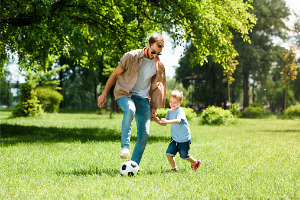
Healthy students are better learners. As the kids head back to school, the Centers for Disease Control and Prevention (CDC) is providing a list of common-sense tips and helpful resources for parents to help children from kindergartners to high school students get fit and stay healthy. Here are a few for you to be aware of:
Wash Your Hands
Germs are everywhere. Touch a surface where germs are lurking, then touch your face, and you can get sick. That’s why, although basic, washing your hands with soap and water is one of the best ways to remove germs, avoid getting sick and prevent the spread of colds, flu and other diseases. Teach young children—and remind older ones—to wash their hands before eating, after using the bathroom and after blowing their nose, coughing or sneezing.
Eat Right and Stay Active
Given the fact that nearly 1 in 5 children suffer from obesity, it’s easy to understand why maintaining a healthy weight is so important. Children with obesity are at risk for asthma, sleep apnea, bone and joint problems, high blood pressure, high blood cholesterol and type 2 diabetes. They are also more likely to suffer from social isolation, depression and lower self-esteem.
Since most children consume almost half of their calories at school, it’s important that they learn how to eat healthy while there. Parents should encourage a diet that includes fresh fruits and vegetables, grains, dairy, lean meats and oils in controlled portions with limited amounts of saturated fats, added sugars and sodium.
Hand in hand with healthy eating goes physical activity. Not only will it help maintain your child’s healthy weight, regular exercise can help reduce anxiety and even help with a child's focus in school. Experts recommend children get at least 60 minutes of physical activity each day—before, during and after school; running, walking and playing sports all count.
Limit Sugary Drinks
While calories in drinks are not exactly hidden (they're listed right on the Nutrition Facts label), many people don't realize just how many calories are in the beverages they drink. Remember that water is a great, no-calorie, low-cost substitute. Have your child bring a reusable water bottle to school and fill up all day long.
Stay Cool
Even though the start of the school year marks the end of summer, it’s most likely still very warm out when your child heads back to the classroom. Learn how to recognize, prevent and treat heat-related illnesses, and follow these tips when engaging in outdoor activities:
- Schedule workouts and practices earlier or later in the day when the temperature is cooler.
- Limit outdoor activity, especially during the middle of the day when the sun is hottest.
- Pace activity. Start activities slow and pick up the pace gradually.
- Wear and reapply sunscreen as indicated on the package.
- Drink more water than usual, and don't wait until you're thirsty to drink more. Muscle cramping may be an early sign of heat-related illness.
- Pair up: you monitor a teammate's condition, and have someone do the same for you.
- Wear loose, lightweight, light-colored clothing.
Plan for Emergencies
As children head back to school, it's important to have a written emergency care plan and to practice that plan as often as needed. The plan should include any medicines your child needs to take, or any assistive devices used by your child. Having conversations now with your child's teacher about being prepared in an emergency can help reduce your concerns if an emergency does occur.